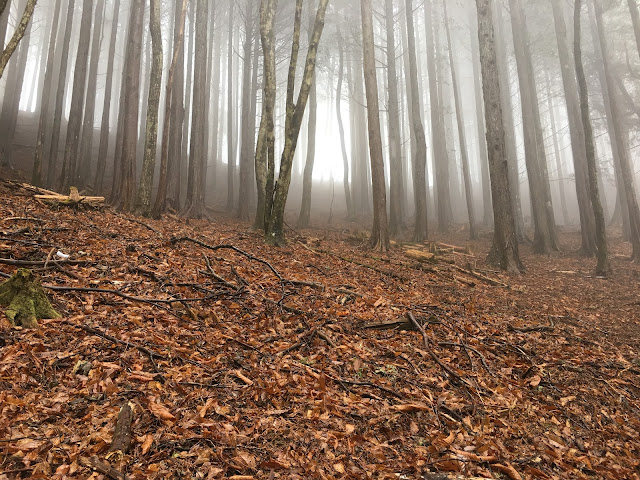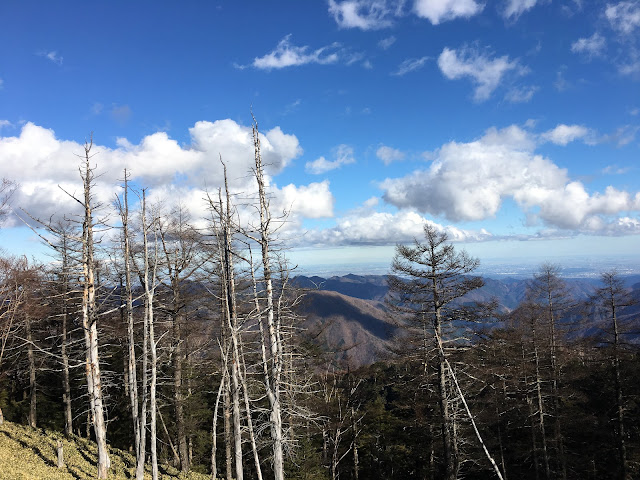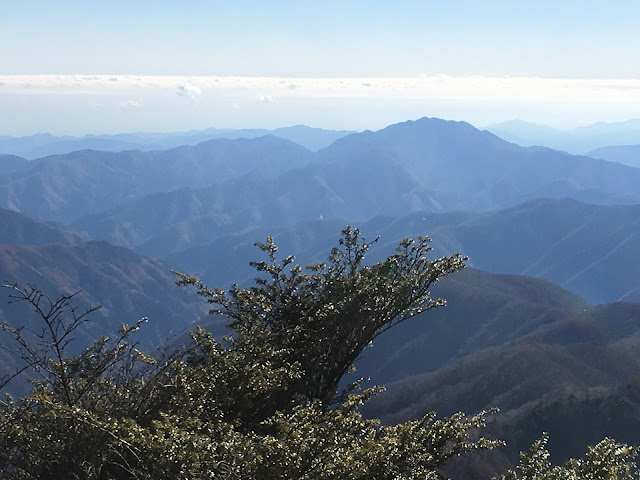Hello Cavepoops--I mean, peeps. Eeps, I mean Oops.
When I was so crazy about Mt. Kumotori, I took a bike ride to the area once. I started from my home in Akishima, Tokyo and headed toward Okutama along Ome Kaido and Okutama Kaido. Eventually, I passed Lake Okutama and entered the forest. For the last 10 km, I rode along the forestry road and finally the hiking trail to the Sanjo no Yu. That is really the limit that a bicycle could go. Actually, to get to the point I did get, I had to carry my bike over rocks or log bridges at more than one point.
Area:
Location:
Map:
Online Interactive Topo Map of Sanjo no Yu
***The Caveman gave up on posting links to Yama to Kogen maps. They are great maps but the publisher updates them almost annually and the links die. Comment if you want me to get you a link to the latest Yama to Kogen map.
Starting and stopping points: My old abode in Akishima
Peaks bagged: none
Getting there/getting around:
I started pedaling the minute I left my home.
Helpful Info
Weather Information:
Time and distance
Total Time: 8:59 Break time: :08 Distance: 133km
Elevation: Lowest: 104 m Highest: 1,102m Total Ascent: 6,373m Total Descent: 6,373m
Technical considerations/difficulty:
Be careful on the trail. It's not for bicycles. Be very courteous to any hikers if you come across any.
Facilities:
The Sanjo no Yu is a mountain hut. It does have a hotspring bath but it is a mountain lodge accessible only on foot after a long hike (or bike ride for cheeky visitors.) You can stay there in the lodge or at one of their campsites by the stream outside. The Sanjo no Yu is used by many people on their way to, or back from, Mt. Kumotori.
Thoughts/observations/recommendations:
That was fun!
One of the ways that I got the hiking bug was doing things like this.
My Japanese outdoor adventures started small. A short dayhike here or there was all I'd tried for years. Then, I got a bicycle after not really having one for a long time. I started riding on the roads around western Tokyo where I lived and worked. Then one day, for some reason, I left the pavement and got on a gravel road. I didn't realize just then but what I had gotten on was called a "rindo", (林道), a forestry road. I followed that road until it ended and realized that I was near the top of a mountain I knew! I got off the bike and cut across country the last bit to the top of a mountain. Oila. A knew hobby of mine was born. I call it hikeling. So, after spending a lot of time around Mt. Kumotori and looking at maps, I realized I could get to nearby Sanjo no Yu by pedal power. Once I realized that, I had to do it.
Let's look at some pictures.
Mt. Kumotori is the mountain at the top left of the map. 雲取山
The floating Miyama Bridge across Lake Okutama.
Lake Okutama
Yes, I crossed that bridge.
(No, I wasn't riding!)
Inside the Sanjo no Yu
It's a happening spot.
They sell deer jerky. I thought that was cool.
Well, that's it for the Sanjo no Yu.
And that's it for this collection of posts about nearby Mt. Kumotori.
If you want to see one of those, check out
or




































































